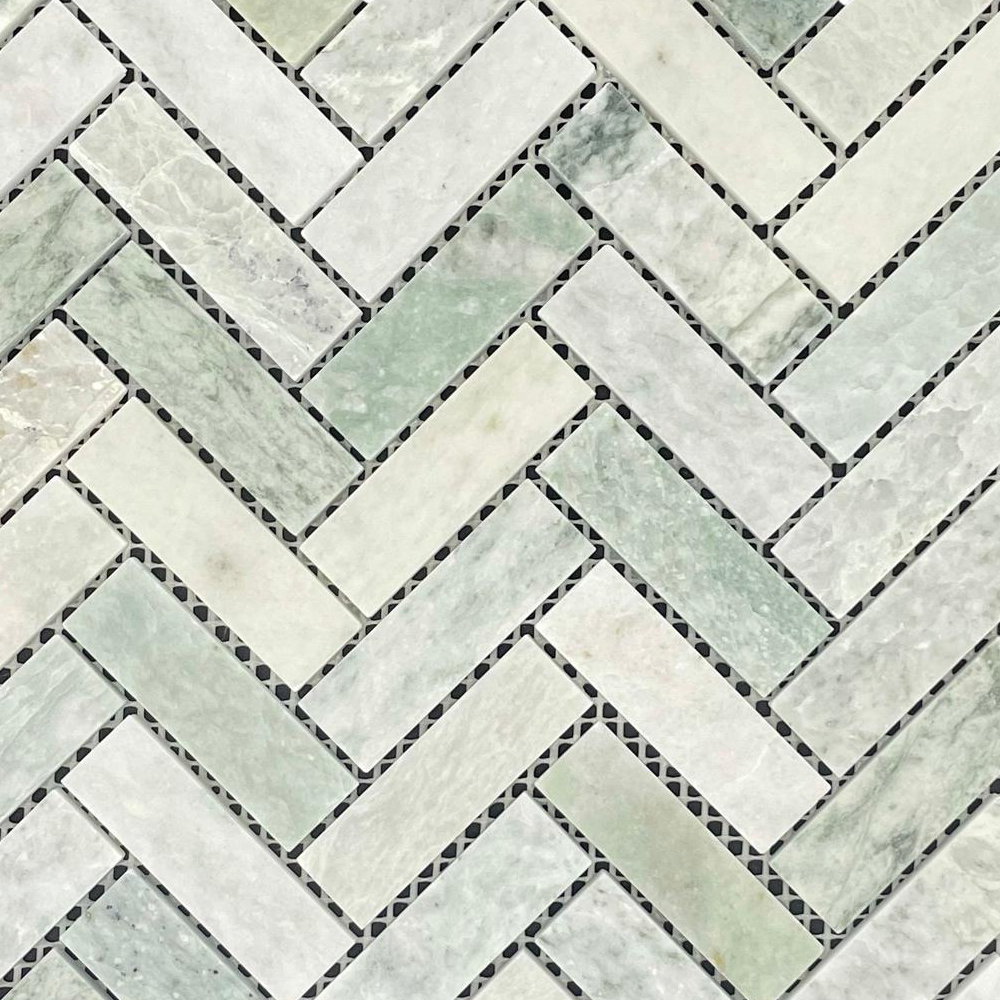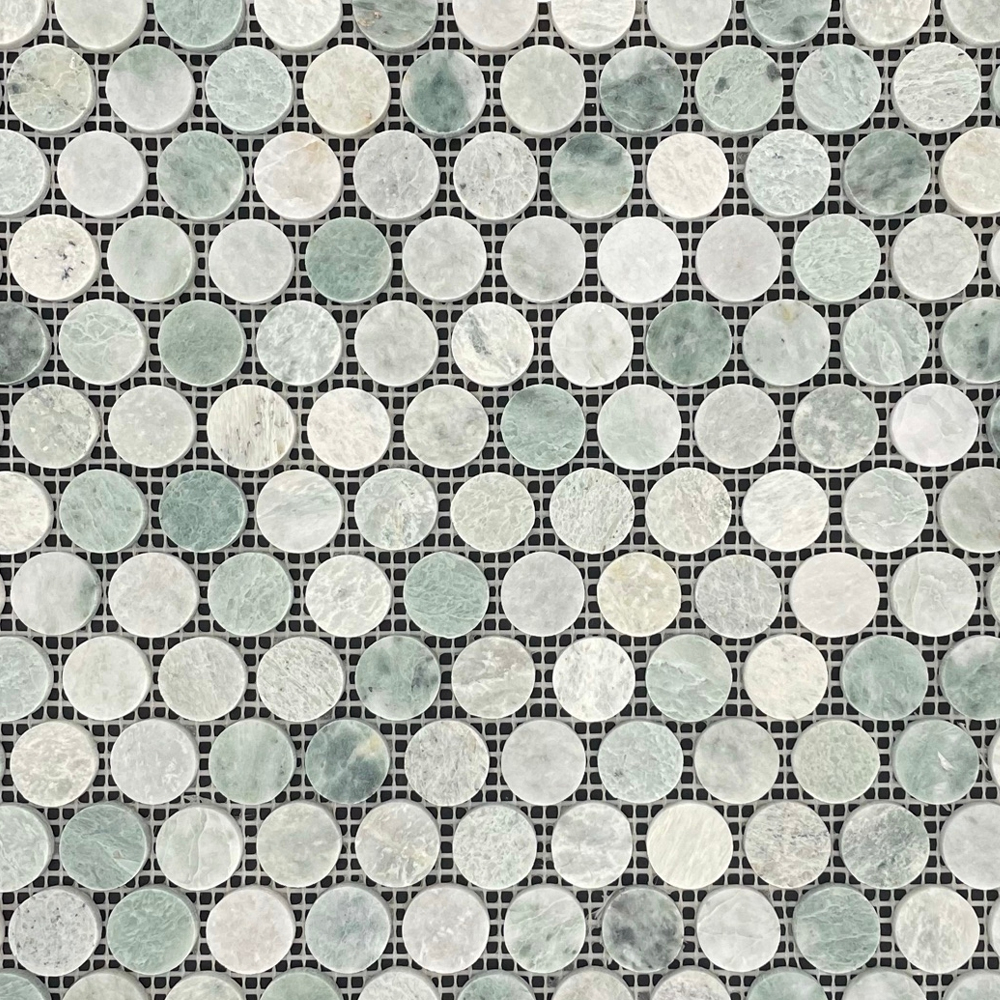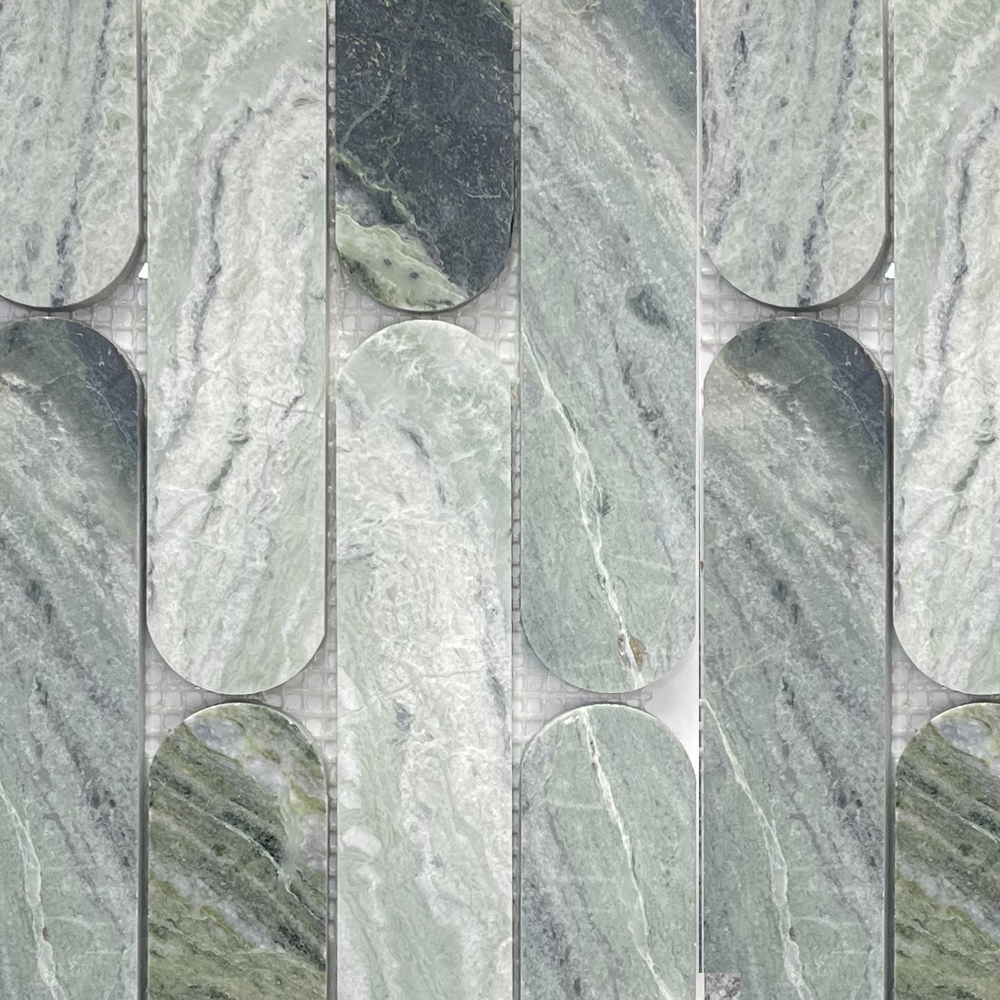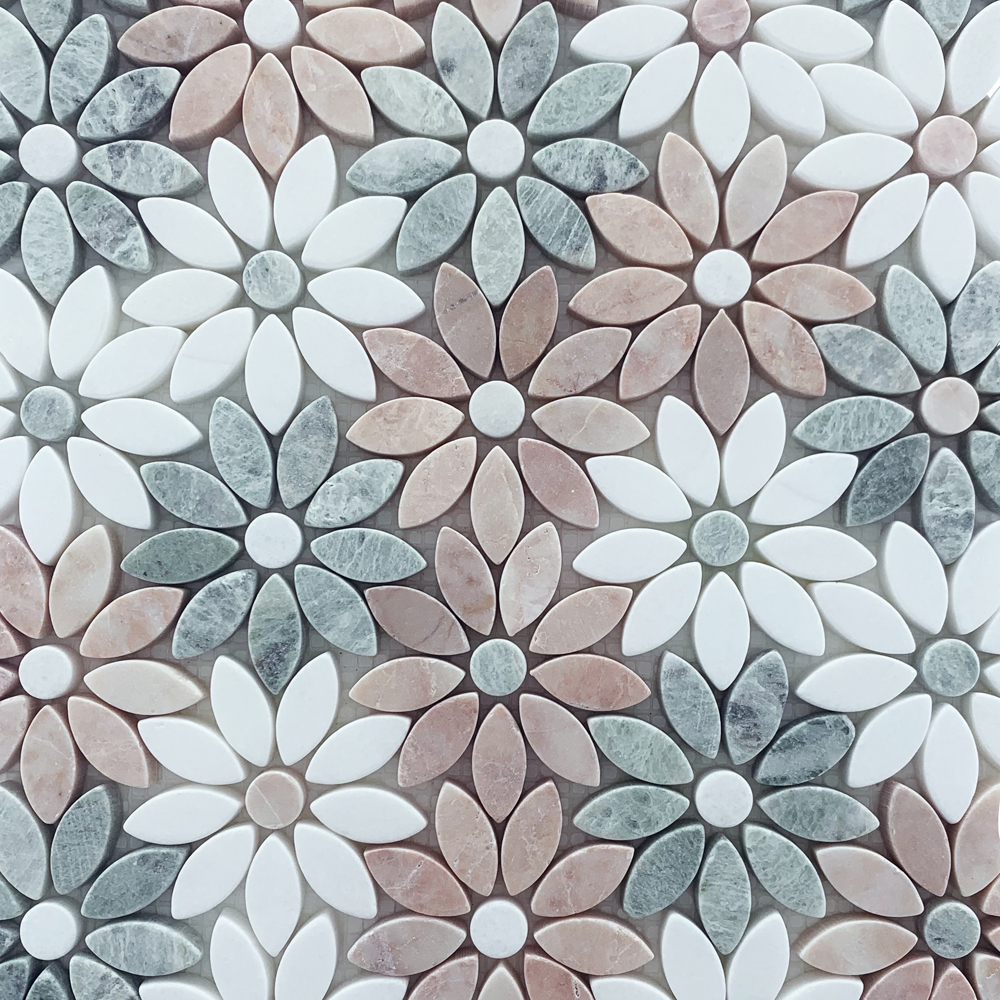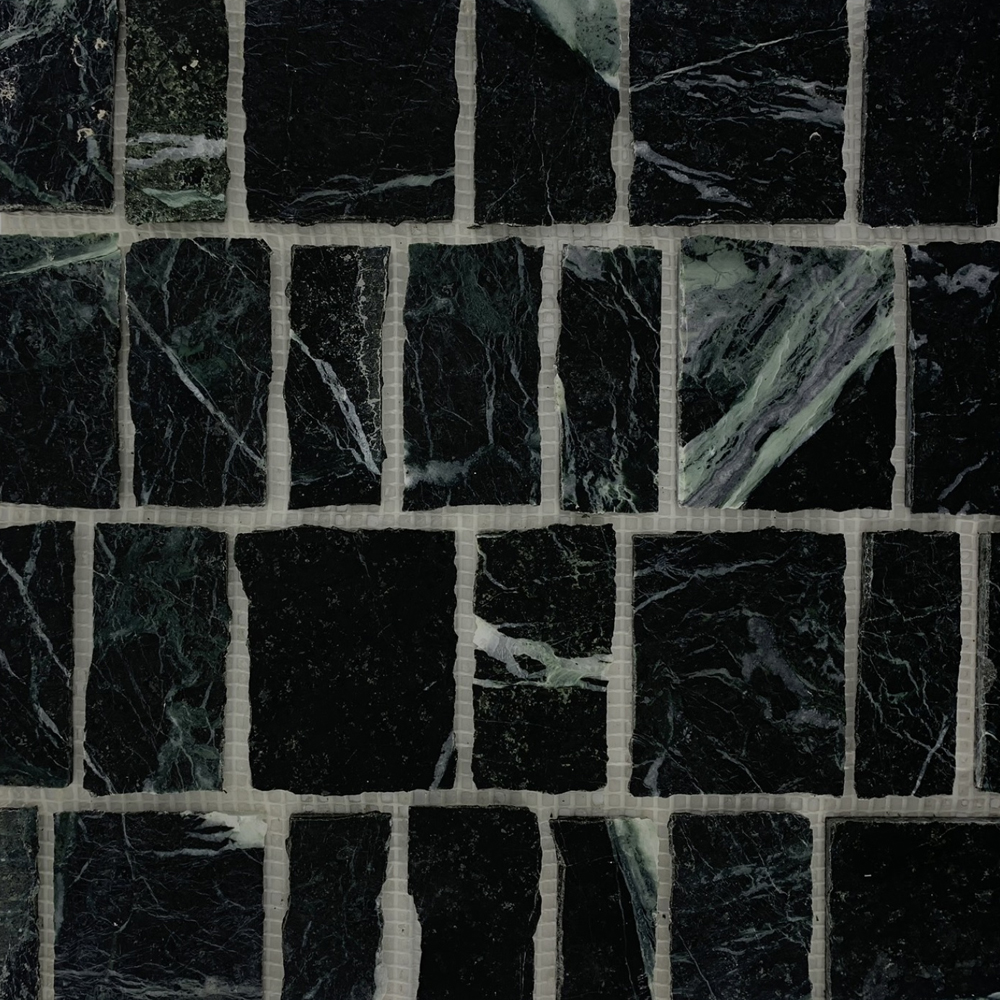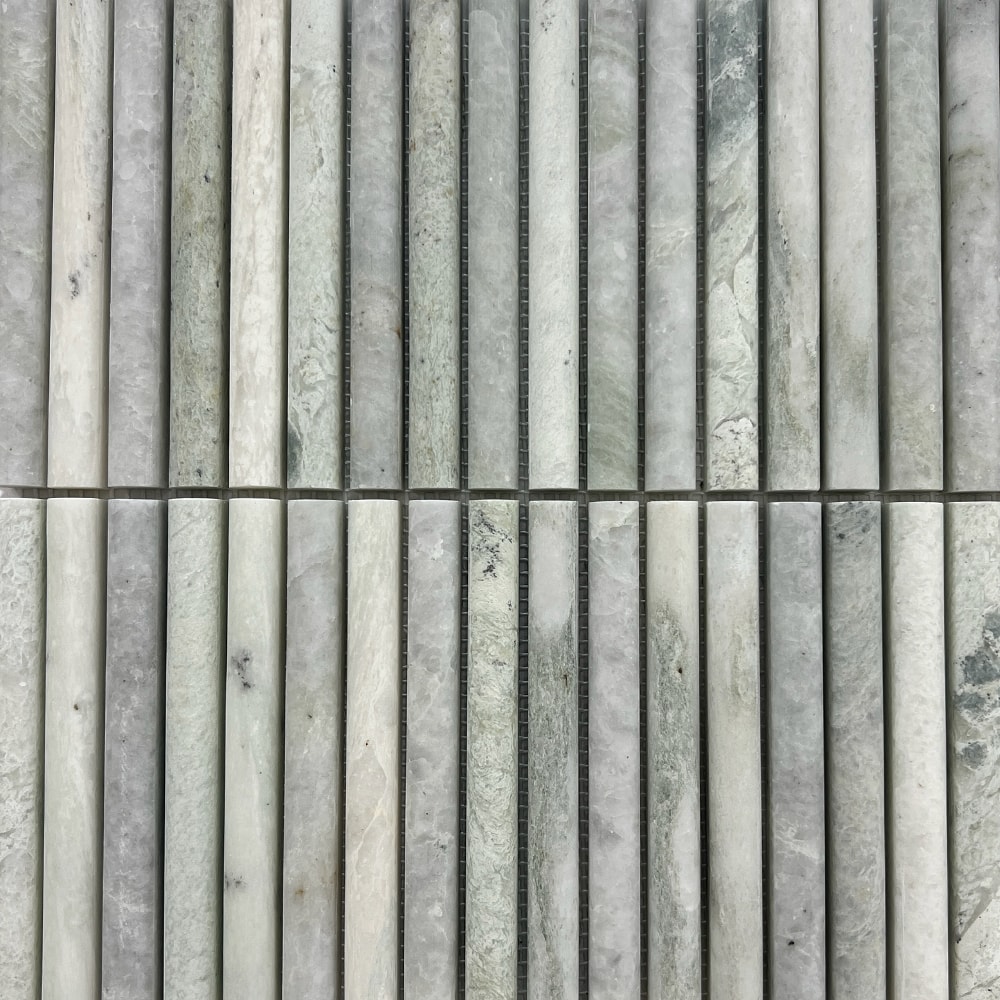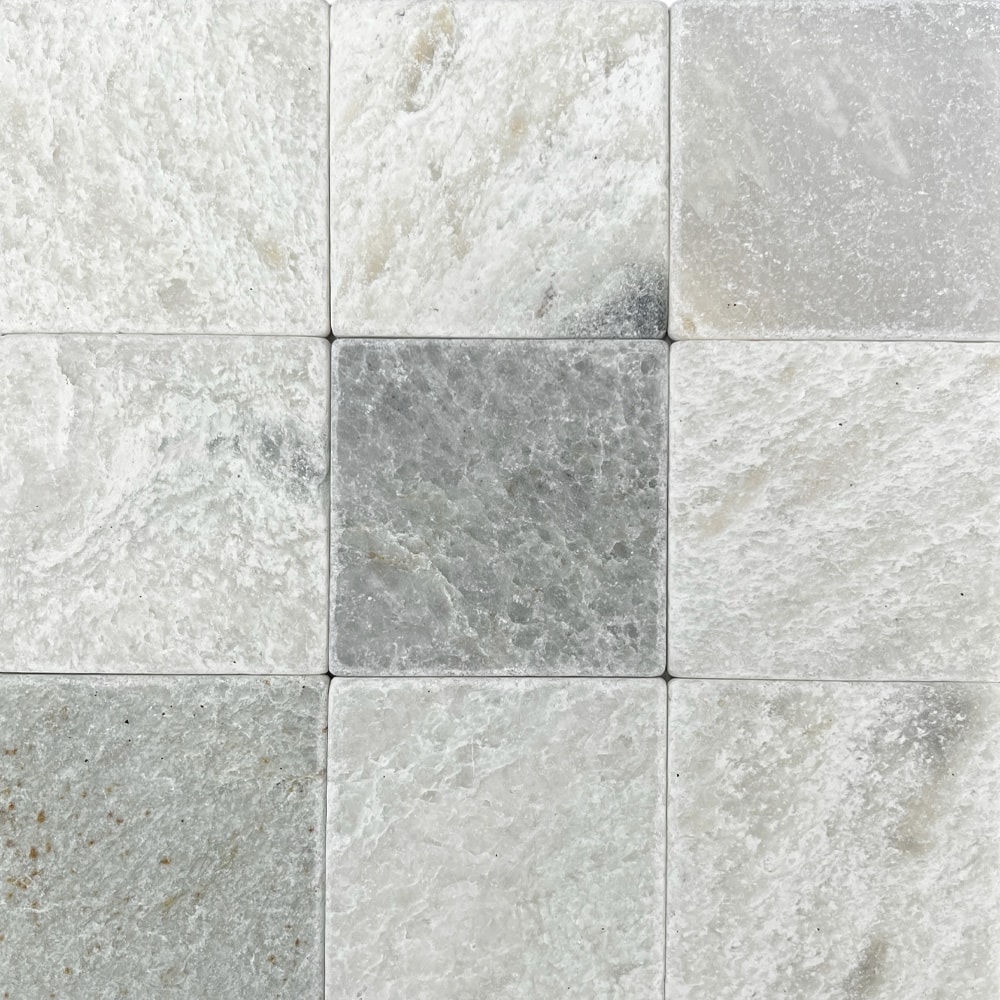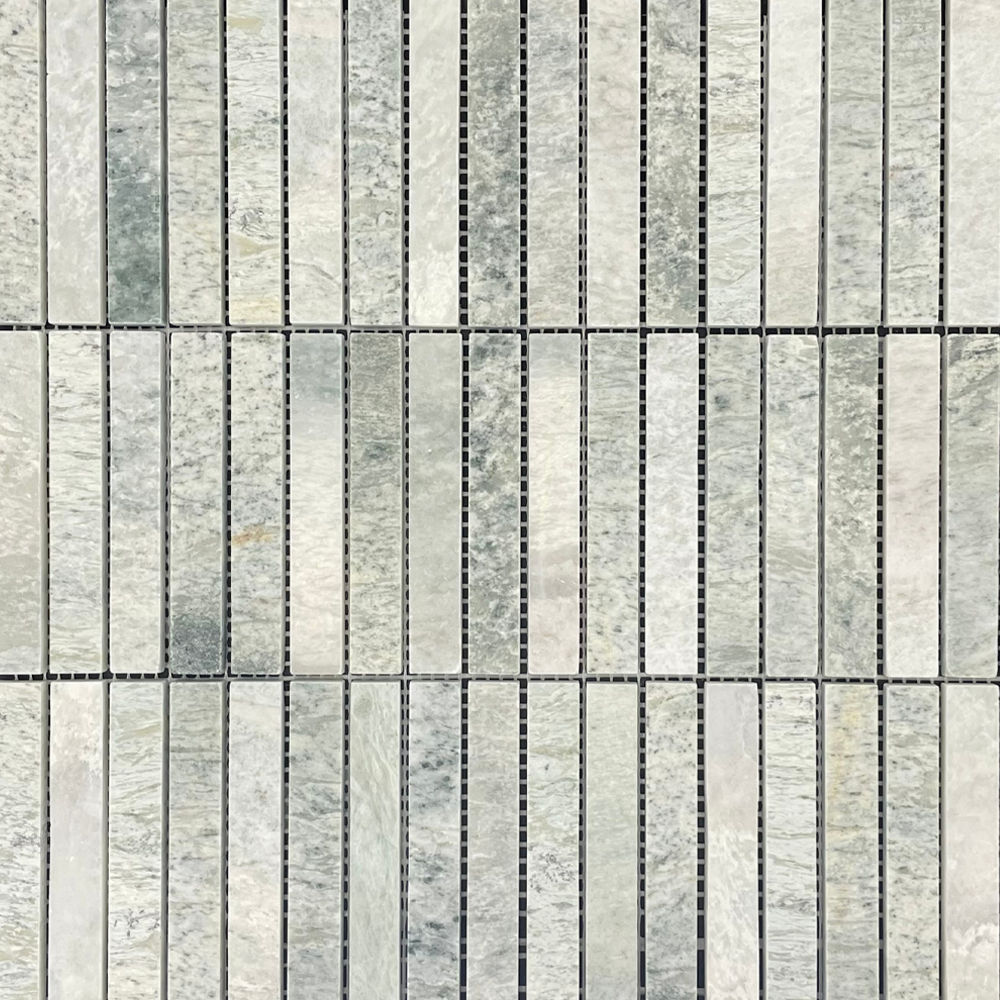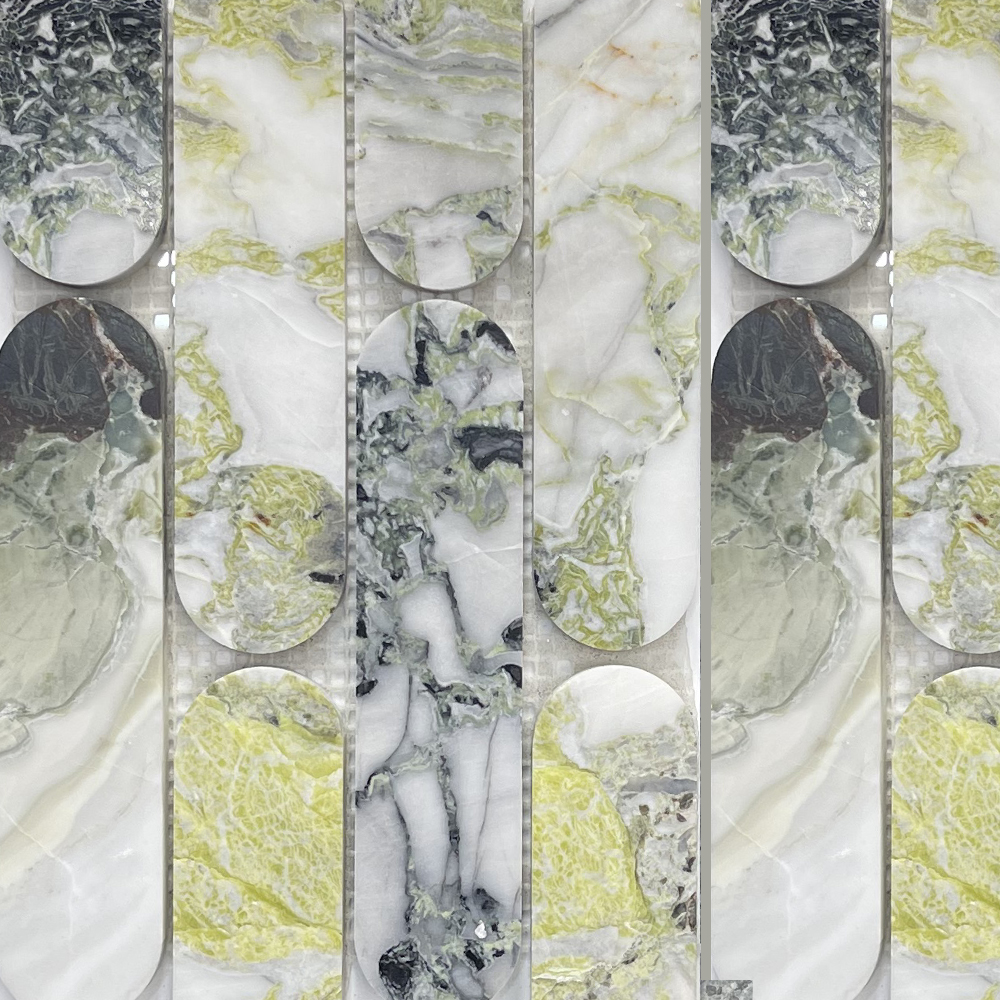Green Marble
Whichever type of green marble you choose for your next project, the stone is bound to make a lasting impression, bringing outdoor tones and natural glamour to an indoor setting. From jade tints and forest hues to vibrant, spirited Verde, green marble is one of the most diverse varieties there is, with it being used worldwide for centuries to distinguish a space as something truly special.
Radiating a sense of tranquillity and dignity, green marble is the perfect finish for considered decor with diverse veining, often in shades of green, black, and white. Whether it’s a bespoke tabletop, flooring, or an interior wall, green marble has within it endless possibilities.
How Green Marble is Formed & Where it Comes From
Most green marble is quarried in India which contains the richest deposits anywhere in the world. Specifically, these highly-prized deposits of rare green marble are found in the Aravali mountain range which is located in the North-Western state of Rajasthan.
Other varieties of green marble can be found in countries as far as Ireland or Sweden with each deposit exhibiting unique shades and veining.
Wherever green marble is found, however, the same powerful natural processes have been at work. Namely, limestone undergoes the heat and pressure of geologic movement, metamorphosing the stone into a crystalline structure, with local minerals blooming within as marble veins.
The vibrant colour of green marble is thanks to the presence of serpentine rocks caught up in eon-long natural processes in the Earth’s mantle. These rocks are naturally green in hue thanks to a mixture of minerals such as chromium, cobalt, nickel, and magnesium iron.
Where Green Marble is Used in the Home:
Kitchen Benchtops
Despite looking dramatically different from other varieties, green marble possesses the same highly-desirable properties. This includes being porous.
As porous materials are poor conductors of heat, this makes marble a perfect choice for a kitchen benchtop. With green marble being a darker shade than traditional white marble, it’s also more practical in busier spaces where marking is more likely.
With green marble being such a versatile variety it compliments a wide range of cabinets and kitchen fittings, especially brass and darker choices that work well with the base colour of the stone.
Wall and Floor Tiles
Used as flooring, green marble gives a sense of gravity to a room, with the ocean-like shades elevated by porcelain bathroom suites, lighter hallways, and living spaces.
As a tile, a yet more dramatic but still understated effect can be achieved by pairing the green marble with a white variety such as Carrara creating a showpiece in your home or commercial property.
Bathroom Vanities
Bold, classic, but impactful, a chunky slab of Verde marble makes for a captivating vanity top. Lush green tones lend themselves perfectly to powder rooms and mirrored spaces, creating a sense of clarity and freshness.
When used as a sink or wash space, green marble can be used to match cladding or give contrast to white bathroom fittings. While popular throughout the past century, green marble remains a contemporary style choice.
Feature Walls
Freshening up any setting, a green marble feature wall speaks for itself, eliciting a sense of expanse, depth, and mystique. Impossible to ignore, green marble has long been used to bring walls to life.
The stone is suitable to use as a show stopping centrepiece or to clad an entire wall surface, with the subtler veining and shades of aqua, forest, emerald, and jade bringing together a living room or commercial lobby effortlessly.
Taking Care of Your Green Marble
As with all marble, green marble should be cleaned with slightly soapy water or a commercial cleaner if preferred. Importantly, never use an acidic cleaner on marble as this will stain and compromise the stone’s integrity. To keep your green marble looking its best and avoid stains, sealing green regularly marble is recommended.
Choosing the Right Finish for Your Green Marble
Whether it’s green marble or otherwise, the colour of the stone is only half the story. Choosing the right finish is just as important and can make a drastic difference to the way the marble looks in your space.
Honed Finished Green Marble
Honed green marble is a popular choice when using the material in harder-wearing environments that are expected to see increased usage.
Choosing honed green marble means your stone will have a more matte-like appearance without the distinctive shine. While a high polish is preferred in some situations, honed gives a more natural look that does not reflect as much light with scuffs and marks less visible. Honed will also make the veining and tones of your green marble subtler.
For these reasons, honed is a preferred finish for kitchen worktops and heavy-footfall flooring environments where a more traditional style is suitable.
Leather Finished Green Marble
A contemporary decor choice that befits the patterning of green marble is a leather finish. This finishing process gives a satin-like appearance with a matte-sheen.
Green marble with a leather finish begins life as a honed slab that is then subjected to an accelerated weathering effect thanks to diamond-treated brushes. This brings out the natural grooves and dimples of the stone,
A leather finish celebrates the texture found within a stone, making it suitable for close inspection as worktops where incidental light can highlight the natural features.
Polished Green Marble
Polished green marble is a timeless finish that allows the stone to showcase its veining and colours.
Polished marble involves gradually removing micro-layers of marble until a uniformly flat surface is achieved using finer and finer grade brushes. With the addition of resin, the stone reflects a high shine that suits almost any environment.
As a clean-looking, time-tested finish, polished marble is perfect for hallways, bathrooms, and kitchens as both flooring, wall cladding, and benchtops with the smooth finish easy to maintain.
Brushing Finished Green Marble
Brush finishes feature a worn look that gives the impression of history and activity in a space. The surface of brushed green marble is similar to a honed finish but with more pronounced ageing, with the naturally porous surface somewhat exposed.
This adds considerable texture to the material, making it ideal as a flooring material with the surface providing better grip when it matters. The aged appearance of brushed green marble gives the impression of a room being lived-in that can work well in kitchens.
Bush-hammering Fossil Green Marble Finish
Fossil green marble subjected to bush hammering will give the ultimate rustic appearance and is suitable for marble slabs 3-4cm thick onwards.
The effect is achieved with pointed rotary hammers pitting the green marble across the whole surface by 1-3mm. This creates a highly-textured plane that catches highlights dynamically, with the earthy tones of the fossil green marble accentuated by the finish.
With optimum non-slip properties, bush hammered fossil green marble is also ideal for flooring applications both indoors and out with its natural toning never out of place.
Fossil Green Marble with a Sanding Finish
Blasted with tiny particles of silicon or other micro-crystals, fossil green marble with a sanding finish gives a milder effect than bush hammering. Combined with the organic hue of fossil green marble a sanding finish still retains the interesting signs of ancient life that remain within.
A sanding finish gives a subtle texture and is perfect as a kitchen splashback, flooring, or wall tiling where a less reflective surface is desired.
Contact us
RMS Marble is a market leader in providing the world’s most exquisite stone and ceramic materials for both commercial and personal projects. We partner with the best suppliers and designers to provide a complete range of products, cut and finished to your specification.

